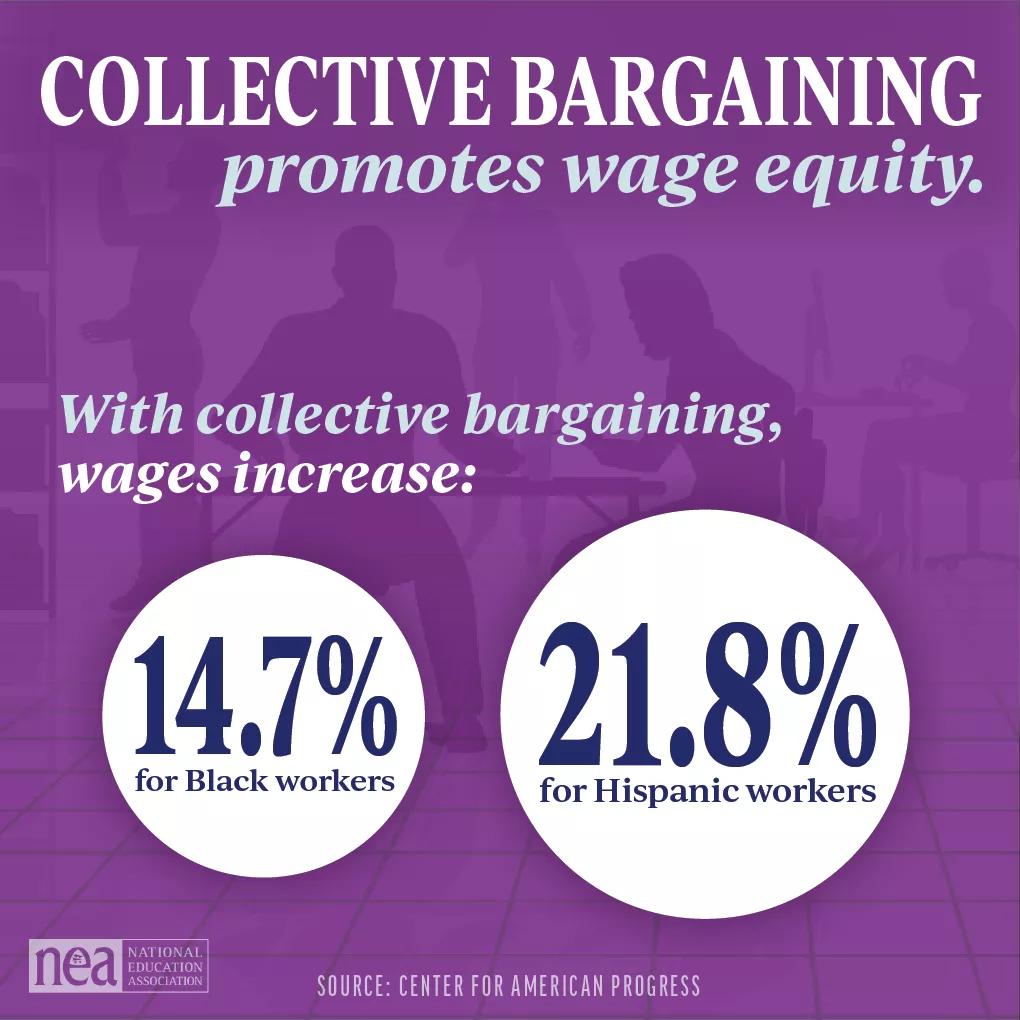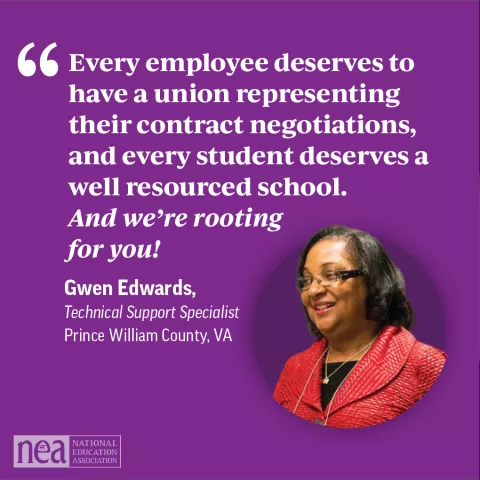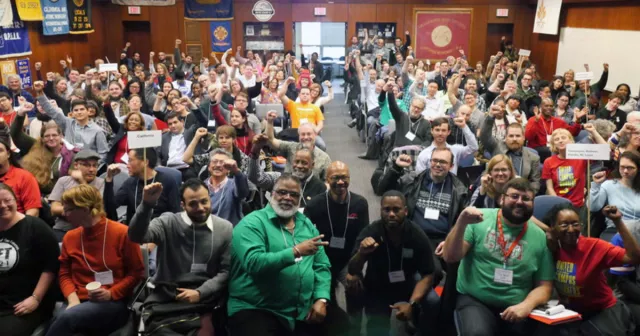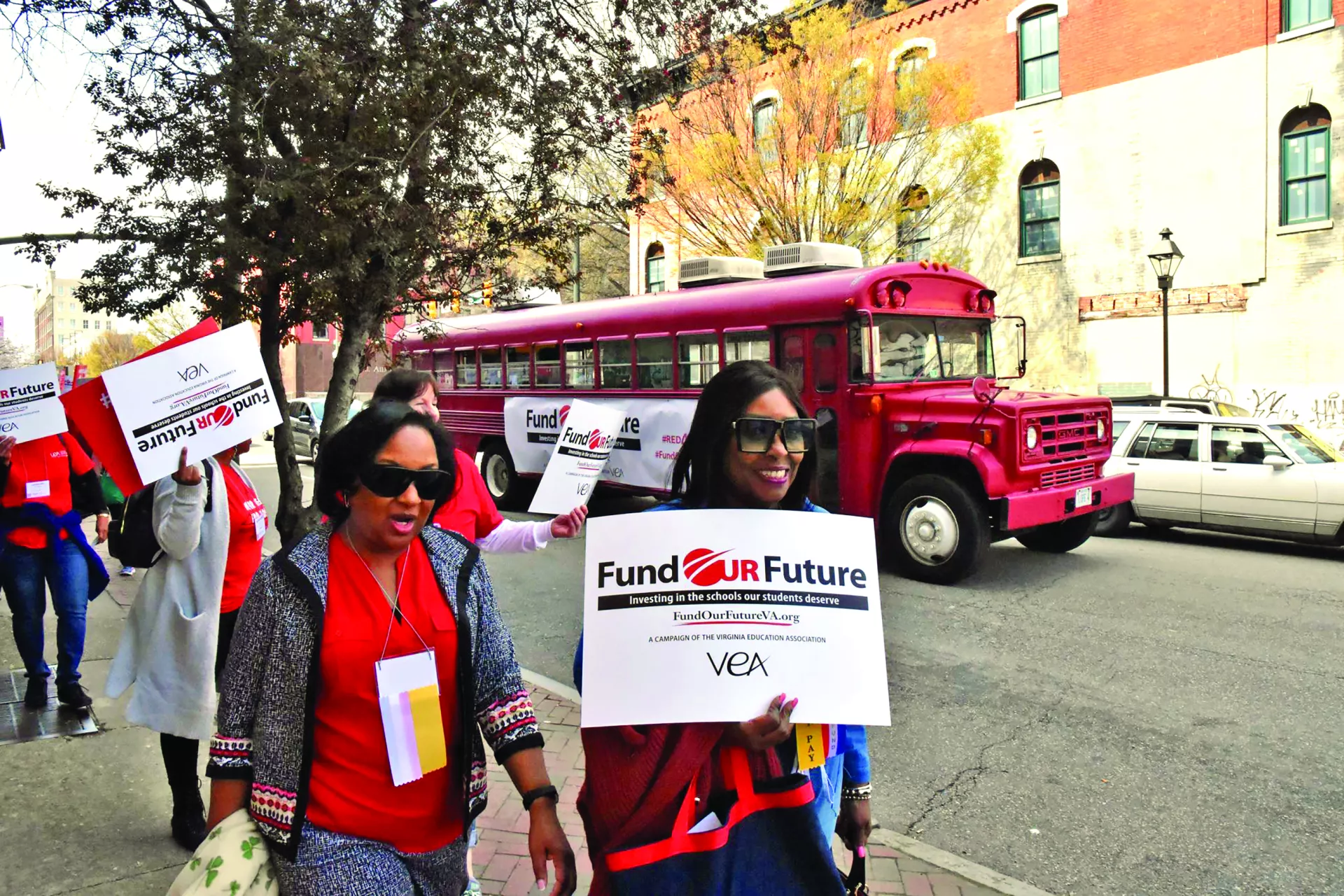In 1935, The National Labor Relations Act (NLRA) was passed in the United States, guaranteeing the right of private-sector employees to organize and collectively bargain. While this law only applies to private-sector employees, many states have since followed with similar laws to regulate organizing, bargaining, and settling disputes for working people in the public sector, including public education employees.
Currently, teachers in 34 states and the District of Columbia have the legal right to bargain. Education support professionals in 31 states plus D.C. have that right, as do some higher education faculty in 28 states and D.C.
Collective bargaining gives educators a voice. Through collective bargaining, NEA members negotiate for more than their own economic security. They are also securing vital resources to help communities bring in more public resources to improve education, by reducing class size, increasing student learning times while reducing unnecessary testing, and gaining affordable health care for children and their families.

A new report from the Economic Policy Institute shows that the erosion of collective bargaining has been a major factor in depressing wages and driving wage inequality for 40 years.
An Educator's Fight for Collective Bargaining Rights
This year, NEA members, including educator Gwen Edwards, fought to remove Virginia's ban on collective bargaining for public employees. Regaining their right to collective bargaining has opened the door for greater advocacy for their state's students, schools, and educators. We spoke to Gwen to learn what this victory means for her and her students.
NEA Today: The collective bargaining ban for public employees in Virginia was finally lifted in May 2021. What does this mean for the state’s educators and students?
Gwen Edwards: It means that our voices are at the table, and we are able to impact decisions. When Virginia educators had collective bargaining decades ago, they were able to negotiate for additional teachers for reading, art, and music instruction. They helped set school calendars and fairer discipline policies. Now our voices will be heard again.
Collective bargaining means we can advocate for high-quality professional development and safer conditions in all schools.
We’ll be able to speak up about the need for additional funds and staffing. I work at a school with a large population of lower-income students, and we need more resources than schools serving wealthier families, not fewer. We will be able to negotiate for additional services to meet student needs, whether that means increases in staffing, improved access to technology, or more books.
How have you been involved in advocating to restore collective bargaining for educators?
GE: I participated in lobbying through the Virginia Education Association and the Prince William Education Association. Over the years, we wrote letters to our elected officials, held rallies, marched at the Virginia Capitol, and spoke to our representatives about repealing the ban on collective bargaining. We just kept talking about it.

Our #RedForEd march in February 2020 was particularly impactful because that made our cause so visible. It was a good way to start educating the public.
How are you working to organize educators now?
GE: Our building reps are already holding meetings so they can explain what collective bargaining is. A lot of people don’t know, because so many of us have never had these rights. We’re having those one-on-one conversations with our members and all school employees to show them how collective bargaining rights will benefit them and their students.
What would you say to educators fighting for collective bargaining rights in other states?
GE: Don’t stop talking about what these rights mean. Every employee deserves to have a union representing their contract negotiations, and every student deserves a well-resourced school. And we’re rooting for you!
Collective Bargaining: What It Is, How It Works, Why It Matters

Research Shows: To Raise Pay and Boost Wage Equity, Expand Collective Bargaining

How To Get Involved In Collective Bargaining




